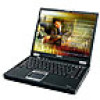Toshiba Tecra M2 Tecta M2 User's Guide (PDF) - Page 120
Shutting down more quickly, Start, Shut down
 |
View all Toshiba Tecra M2 manuals
Add to My Manuals
Save this manual to your list of manuals |
Page 120 highlights
120 Learning the Basics Powering down the computer When you start up again, the computer runs a self-test and loads the operating system. You must open any programs and files you want to use. Factors to consider when choosing Turn Off or Shut down: ❖ No power is used while the computer is shut down. This is the most efficient mode if you will be away from your computer for an extended time. ❖ Restarting from Turn Off or Shut down uses the most time and battery power. ❖ When starting up again, the system does not automatically open the programs and files you were using. For the Windows XP Professional operating system, follow these steps to shut down the computer: 1 Click the Start button, and then Shut down. The Shut Down Windows dialog box appears. 2 Select Shut down from the drop-down list. 3 Click OK. The computer shuts down completely. NOTE Holding Shift while the Turn Off computer Windows dialog box is open, changes the Stand By button to Hibernate. For more information about setting up hibernation "Using Standby" on page 124. Shutting down more quickly In addition to the above procedure, you can shut down the computer by either pressing the power button or closing the display panel.















